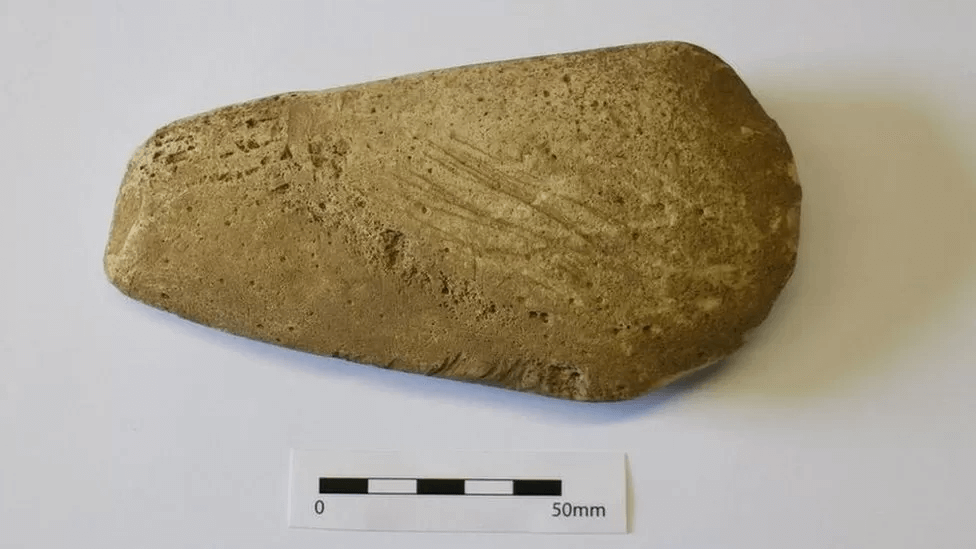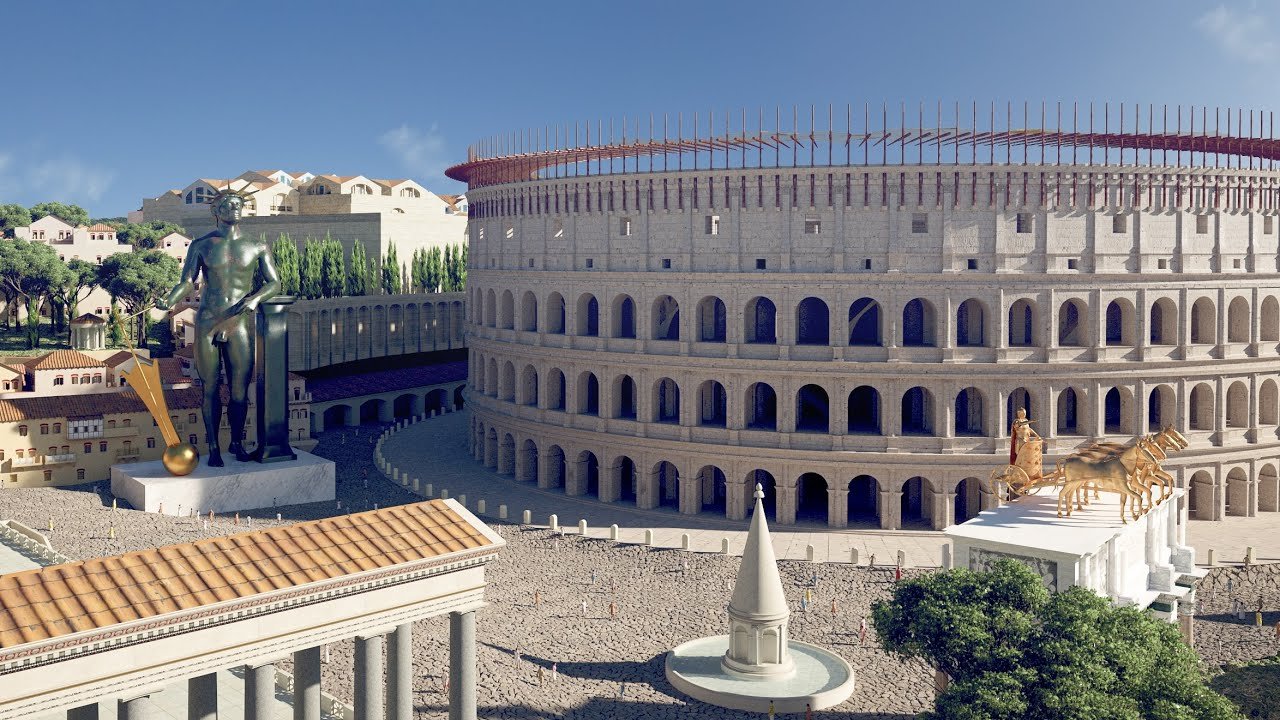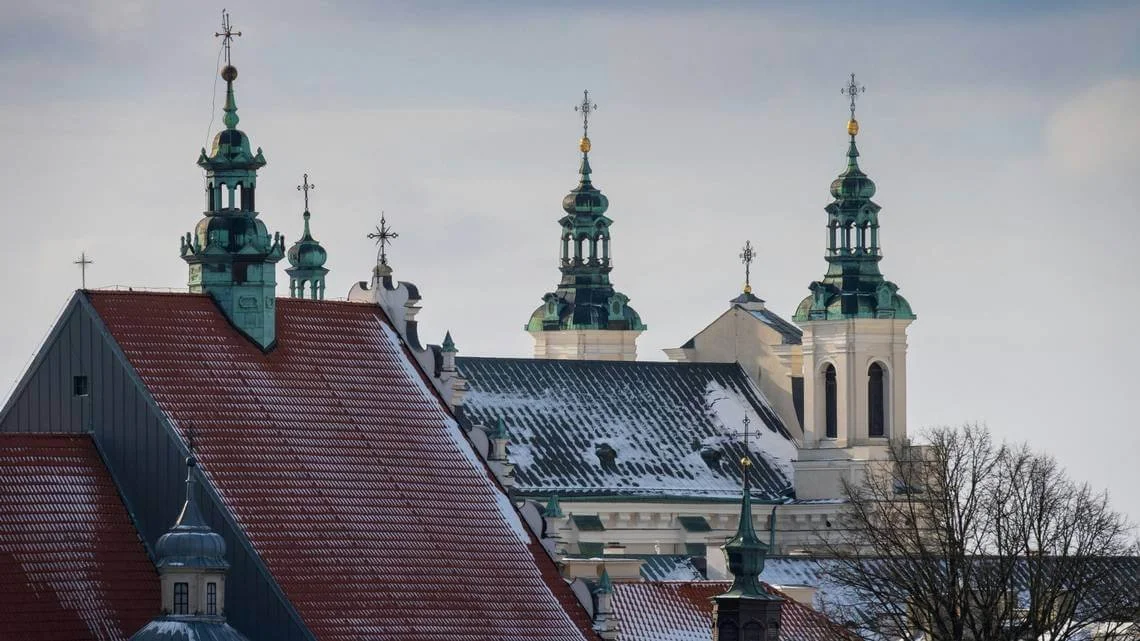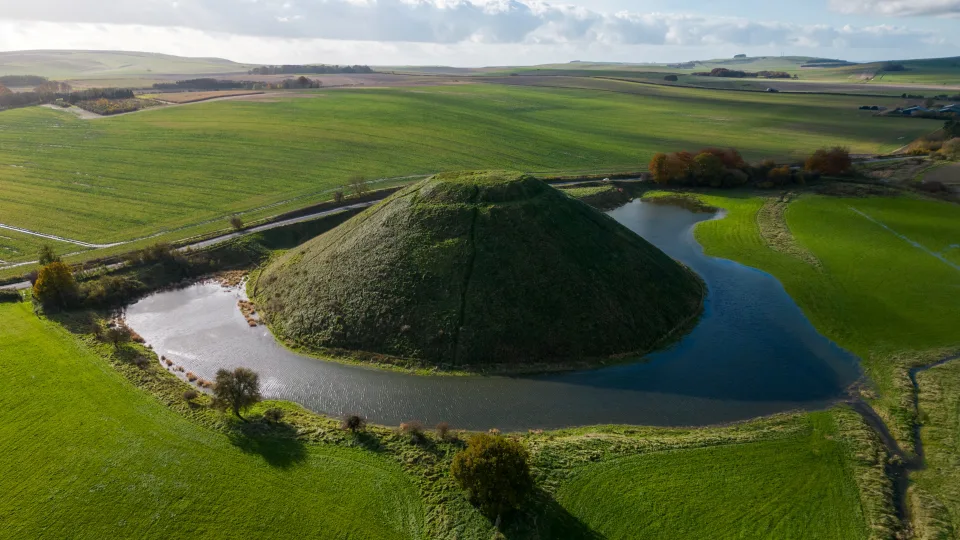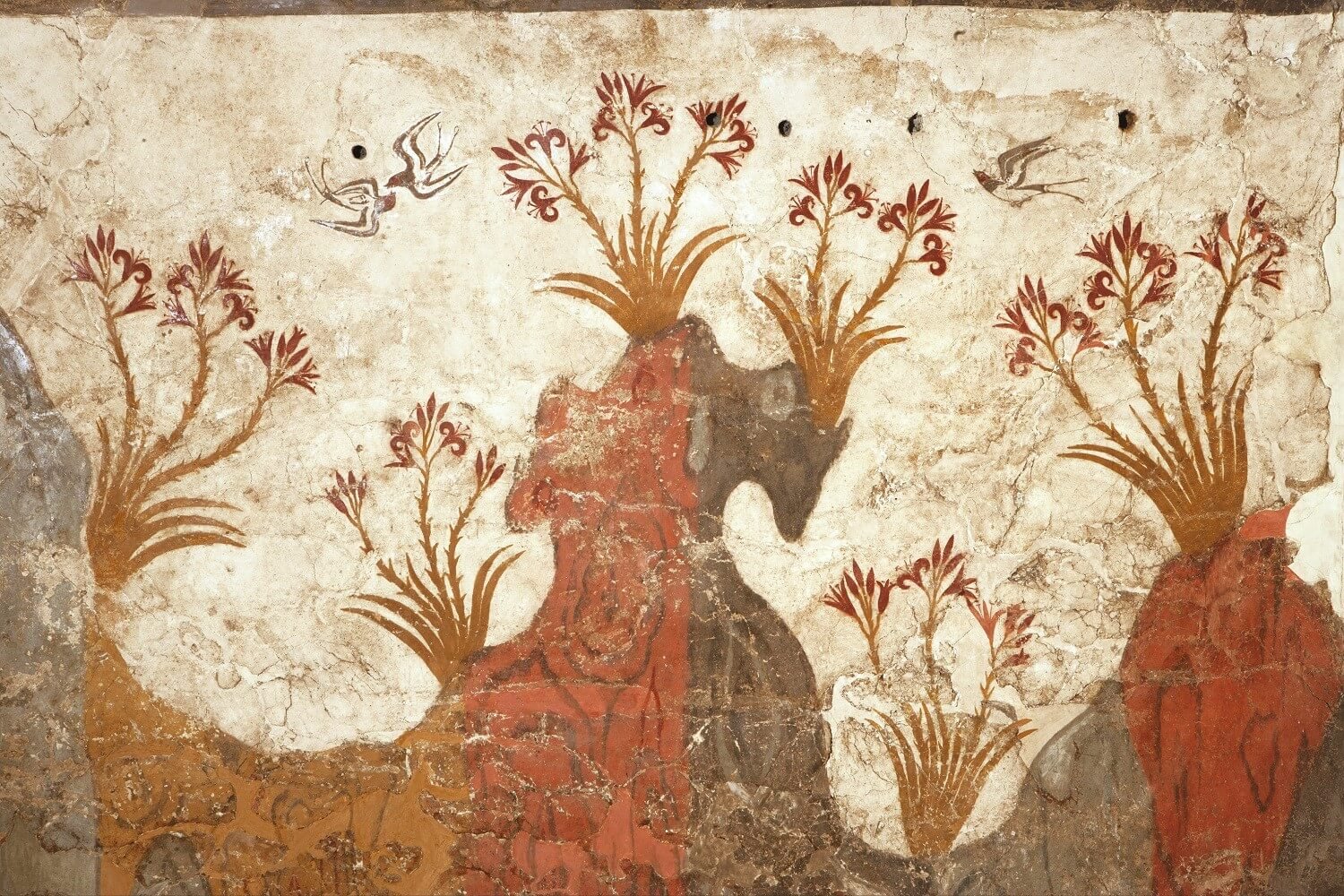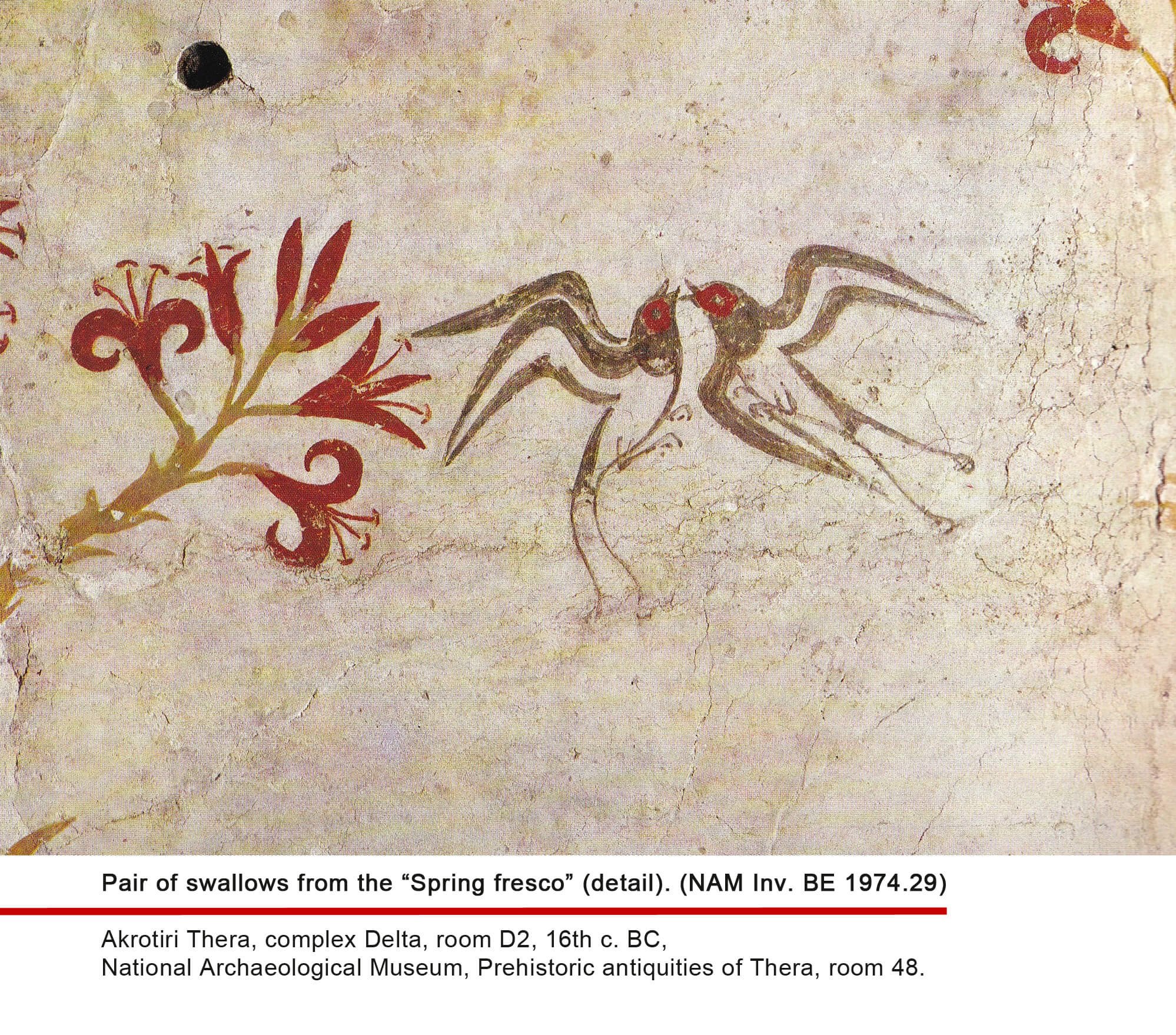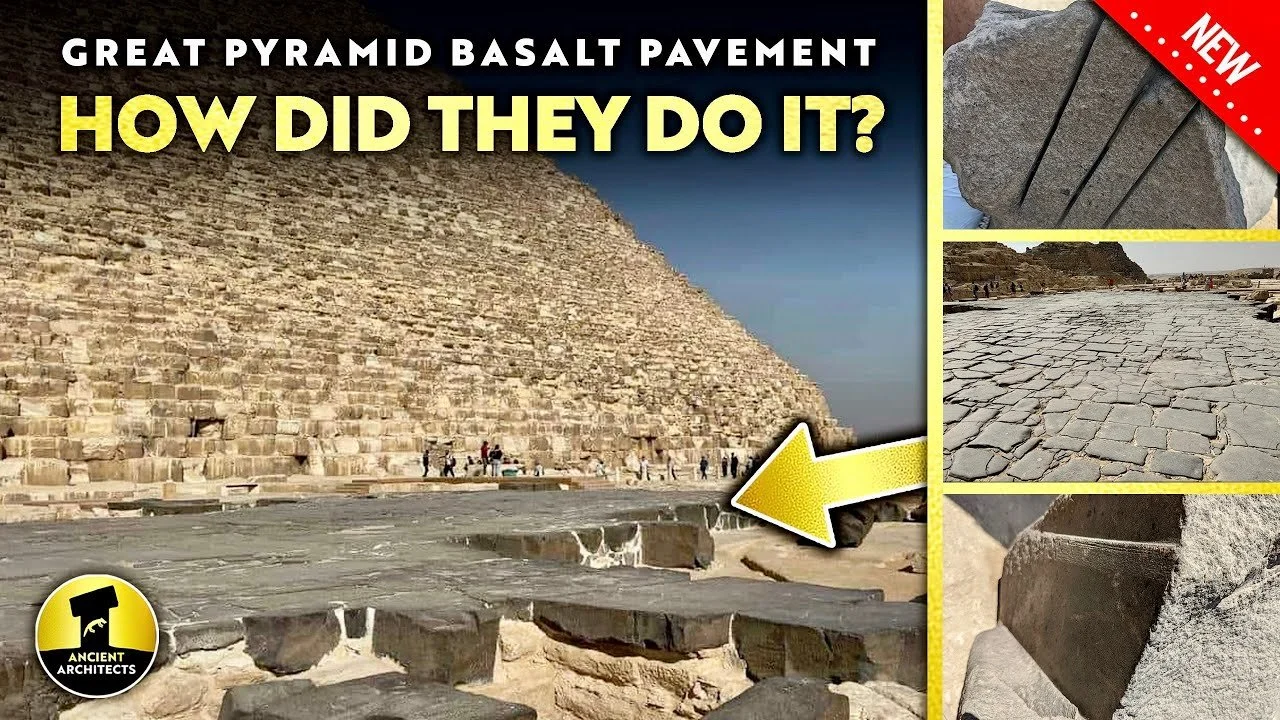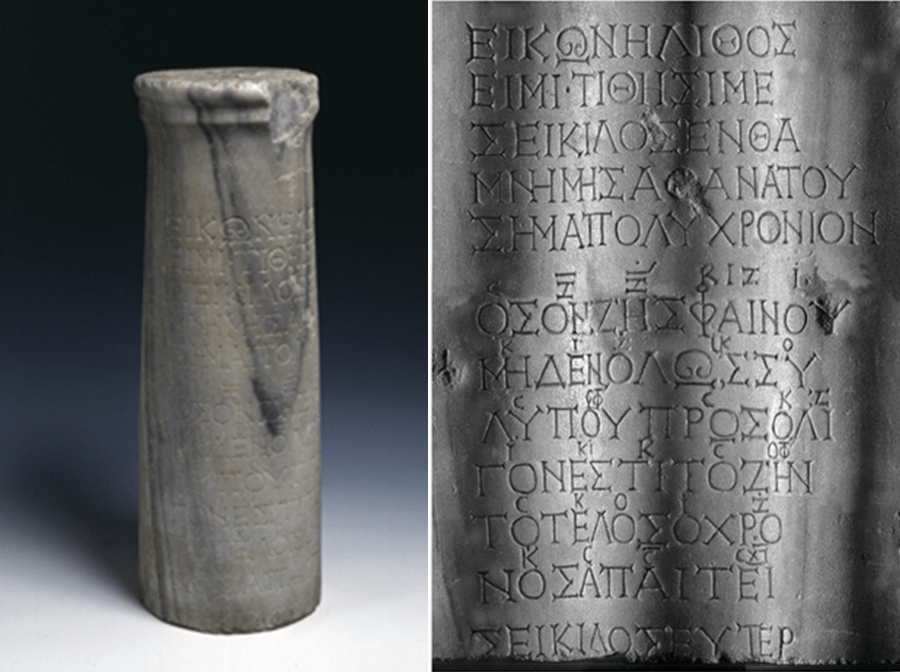In a groundbreaking archaeological revelation, the Middlebeck housing site near Newark, Nottinghamshire, has unveiled remnants of a henge monument and a Roman pottery center, casting a spotlight on a rich history spanning over 12,000 years. Oxford Archaeology spearheaded the survey, unearthing 73 exceptionally well-preserved Roman kilns, elevating this site to national importance.
The Middlebeck housing development, sprawling over 694 acres as an urban extension south of Newark, has undergone intense scrutiny by archaeologists determined to unveil the historical tapestry beneath its soil. The findings offer a captivating glimpse into the diverse human activities that have unfolded in this area over millennia.
A stone axe head may have been kept and reused for about 3,000 years
Prehistoric Enclosure (circa 3,300 BC)
The initial major discovery was a circular ditch with upright timbers dating back to around 3,300 BC. Positioned near a spring, the enclosure featured internal posts and pits, possibly forming concentric arcs of upright timbers, suggesting cultural and religious significance for prehistoric communities.
Polished Stone Axe Head (Langdale, Cumbria)
An intriguing find was a polished stone axe head from Langdale, Cumbria, likely contemporaneous with the enclosure. Significantly, this axe head was buried alongside Iron Age pottery, indicating its reuse as a whetstone over approximately 3,000 years. This suggests the object was valued and passed down through generations.
The kilns represent a significant - and previously unknown - Roman production centre
Bronze Age Cremation Burials and Iron Age Farming Community
The site also yielded 35 cremation burials from the Bronze Age, necklace beads, and evidence of a substantial Iron Age farming community. These findings highlight the enduring human presence in the area and the evolution of cultural practices over time.
Beads from a cremation burial indicate influences from continental Europe dating to around 1,800 BC
Roman Kilns and Pottery Production Center
Perhaps the most significant revelation was the discovery of 73 Roman kilns, accompanied by a vast quantity of related pottery. Described as "remarkably well-preserved," these kilns indicate the existence of a previously unknown Roman pottery production center of regional, if not national, importance. This find challenges previous assumptions about the extent of Roman industrial activity in the Newark area and the broader Midlands region.
The archaeological dig at Middlebeck has unraveled a tapestry of human history spanning from prehistoric times to the Roman era. The discovery of a henge monument, Roman kilns, and evidence of continuous human habitation reinforces the historical significance of Nottinghamshire. As development progresses, the challenge lies in balancing the preservation of these ancient wonders with the needs of the modern community. The Middlebeck excavation serves as a reminder that beneath our feet lies a treasure trove of stories waiting to be unearthed.


